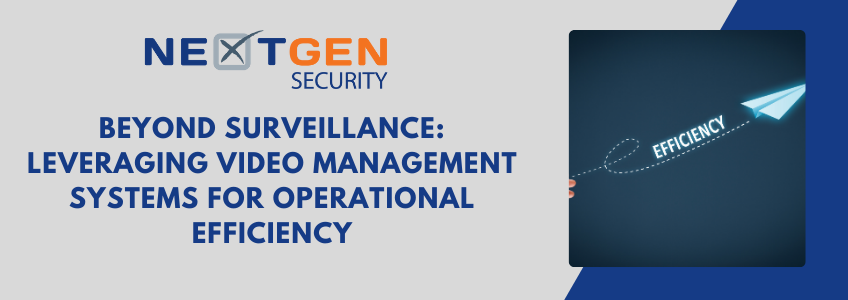Video surveillance technology has matured markedly in recent years. Advancements have not only resulted in new security applications, but they’ve also facilitated enhanced operational efficiencies for end users, as well.
Video Management Systems (VMS) can serve as the hub of a security control room. Enterprise-level Video Management Systems (VMS) today are keeping pace with new third-party technologies, including artificial intelligence and smart edge devices.
There’s been an impressive spike in new, third-party software and hardware enabling the VMS to serve as the core component of a surveillance system. Video surveillance vendors continue to innovate and integrate with new technologies to stay competitive and provide the best possible solutions for their customers. These include enhanced safety, security, and operational efficiencies that AI and integration offer.
VMS should also offer the ability to integrate video, access control, audio, and many other disparate systems into a single platform, increasing effectiveness and reducing operating costs by simplifying security management. The ability to add context to data using AI-powered alerts and receive alarms from other systems such as access and intruder systems is the main reason VMS is chosen to serve as the hub of a security control room.
Historically, one of the biggest challenges in video surveillance deployments has been interoperability, scalability, and reliability. We at NextGen focus on these key features – interoperability, scalability, and reliability – to ensure our customers can continually leverage new technologies as they come to market to tackle ever-evolving threats as well as overcome new operational challenges.
There are many applications emerging within the security market that can be integrated with VMS. Deep learning technologies, for example, are being integrated into VMS to enhance video analytics capabilities. These technologies enable advanced video content analysis, such as object recognition, behavior analysis, and anomaly detection. AI-powered VMS can automate video surveillance tasks, improve accuracy, and provide real-time alerts for potential security threats.
VMS platforms are increasingly incorporating AI-powered video analytics tools that go beyond security applications. These tools can provide operational insights, such as customer behavior analysis, people counting, heat mapping, queue management, and occupancy monitoring. Integrating VMS with video analytics can help businesses optimize operations and improve customer experience, particularly in retail and hospitality settings.
In an era of flexible working, the same tools are also being used to improve the optimization of commercial offices by day, week or seasonally, for example, better control heating, cooling, and lighting to reduce carbon footprints as well as better utilizing security personnel.
VMS is increasingly being integrated with IoT devices such as sensors, access control systems, and alarms to create a comprehensive security ecosystem. This integration allows for real-time monitoring, event-triggered actions, and centralized management of security devices through the VMS platform.
VMS architecture today must be robust, futureproof, and flexible to ensure organizations can rely on them both today and well into the future.

